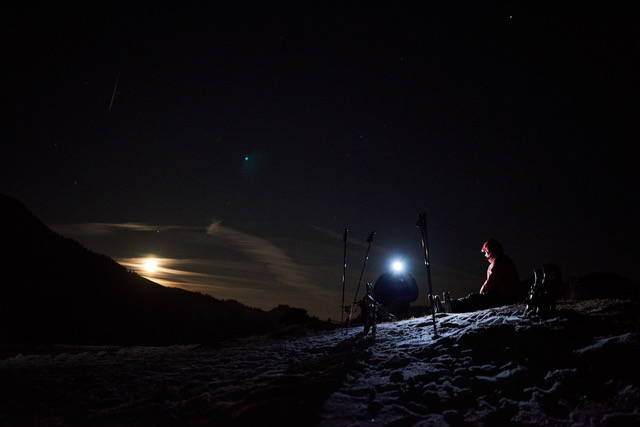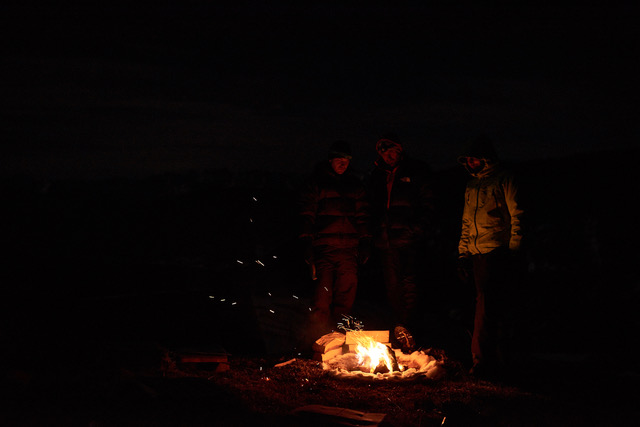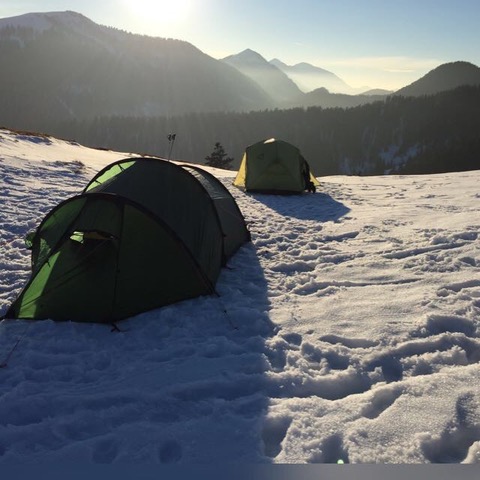Table of Contents
I love camping, it’s the perfect combination of adventure and relaxing. I used to only go camping during spring and summer, but last year I started winter camping. It’s a little bit more advanced, you need to prepare better, but it’s really rewarding too. There’s something about being outside in the rain or snow in the forest, building shelters and camping outside during times when most people enjoy sitting inside behind a cozy oven. A typical problem is how to warm up cold boots when winter camping. The answer in short: Either avoid letting them go cold altogether, or make sure to carefully use a fire or heater to warm them up. Just walking around won’t work a lot of times, especially when it is really cold and the shoes are still damp.
Winter camping – an adventure but best with dry warm feet
Winter camping is primitive and exciting, like a little mini expedition or adventure to spice up your daily routine. And nature is beautiful in winter too, you will see weather phenomena, feel a vibe and atmosphere you never experienced before. Last year I woke up during the middle of the night when almost freezing cold rain that tapped on the tent had turned slowly into snow as the temperature was dropping.
The steady tapping all of a sudden stopped, but you could still hear a very soft swishing sound on the side of the tent, almost as if little leaves were falling on it. It was a very eery night and in the morning we were completely snowed in.

And since I left my boots at the end of my sleeping bag they were cold as ice and frozen solid. I ended up putting them on, walking around with what felt like solid blocks of ice and warmed them up on the fire we started quickly to cook some coffee. Ever since then I have been looking for tips to keep boots warm during a freezing night in the tent how to warm up cold boots when winter camping.
Keeping your boots warm is better than warming them up
Never leave them outside the tent! A lot of beginners do this, but it’s a surefire way to have frozen, damp boots in the morning. Worse, even when in a warm climate, boots outside the tent is a no-no: Creepy crawlies etc. can just crawl right inside if you leave the shoes for hours outside without attention.
Keep your boots on when it really counts. It sounds bad, but if it’s really cold and you need to stay warm, it’s better to dry your boots before you go to bed and keep them on. It’s a weird feeling to keep them on when you snuggle in your sleeping bag, but it will keep them warm, dry and make a difference.
Put them inside a garbage bag, and the bag inside your sleeping bag. Your sleeping bag is the best place for stuff you don’t want to be frozen. So if you don’t like the thought of wearing your shoes overnight, just stuff them in a plastic garbage bag and place the garbage bag at the end of your sleeping bag.
Alternative: Put them under your pillow. If your boots are clean you can also place them under your pillow – in case you don’t like the feeling of having them inside your sleeping bag. This way they are close to your body and they can even be used to have a higher cushion.
Sweaty boots outside when it’s below zero mean frozen blocks of ice in the morning. If it’s above zero, aka not freezing, your boots will be tough and cold, but you can rethaw them no problem. But when the thermometer falls below zero (or 30 Fahrenheit), forget about that. The sweat built up in them during the day will freeze them solid overnight. And even worse: When you thaw them on the fire or in your tent they will still be really cold and damp – which is not good either.
Try to keep your boots dry as long as you can. If you cross a river, take your boots off, even if the water is low and you jump some rocks.
If the snow is deep, definitely wear some gaiters and wear Goretex boots. Goretex is super reliable in keeping stuff dry. And you want to keep your hiking socks dry inside your shoes.
Leather boots are easier to fit on when frozen. But you need to unlace them and spread them apart. The reason they work better when frozen is that synthetic material often shrinks when frozen, leaving your rigid shoes a size smaller than normal.
Remove liners and/or soles from the boots to keep those dry and warm with you in your sleeping bag at least. It’s not as good as having the boots in the bag, but it’s a start. This way at least you have dry and warm soles and liners. It will make thawing the frozen outer shell of the boots easier too.
If you must warm them up – use a fire
When it’s really cold, your boots won’t warm up from running and jumping. Trust me, when the weather is really cold you can walk and jump around all you want, your boots will stay frozen. The sun in the winter is not really strong, so setting them outside in the sun will not work either. If you are isolated and have no way to warm up, frozen boots can be a risk of cold injuries. So don’t put your money on thawing them by walking in them. You need a fire, and keep in mind: Don’t leave them near the fire too long or they will melt.

Don’t wear cold and damp boots for long periods. If you thaw your boots and they’re still damp – don’t keep wearing them in this state. Trench foot and cold injuries can be caused by prolonged exposure to cool and damp conditions. Unless you’re in a life and death situation, it’s better to stop your trip and go home and dry your boots and feet than to risk lasting issues due to cold injuries.
The heavier the boot the harder to put on they become when frozen. If you have really heavy duty boots, possibly soaking wet from snow, it can be really hard to put them on when truly frozen. You probably know this if you’re a snowboarder and ever forgot your damp boots in the basement or outside and tried them on in the morning. In this case, no way to fit in them – you need to rethaw.
Some good tips
Plastic socks trap moisture from your feet and keep the boots dry and not frozen. It’s actually a technique some people use with their sleeping bag too. It’s called a vapor barrier and it keeps your boots dry and warm but it makes miserable squishy feet. But hey, better squishy than cold right?
Pro tip #1 – Put a plastic bottle with hot water inside your boots during the night: This way you can extend or even hinder your boots from freezing. Just make sure to stuff the bottle in as far as possible. You can also use hand or toe warmers – you know, these little chemical pads you can buy at Outdoor stores, Walmart etc. It will make boots warm up quickly and will leave them cozy warm.
Pro tip #2 – Keep socks on your body during the night: Keep your socks on during night or at least keep them close to your body and dry. It’s a good idea to just drape them over your shoulder so they directly touch your skin. This way they will be warm and dry in the morning. You can also wear booties made from downs, which will keep your feet warm and toasty. Remember: Keeping warm is easier than warming up.
Which shoes to wear? If it’s just a thin layer of snow of a few centimeters or less, traditional hiking boots with warm socks will work perfectly. If the snow is deeper you should get some winter mountaineering boots – their additional waterproof and insulating layers will keep your feet warm and dry. Put on some gaiters too to stop snow from moving inside your boots and socks if you move around a lot. Gaiters have another nice side effect: They put an extra insulation layer around your lower leg – nice!
Conclusion & Call to Action
Try out winter camping soon, it’s a blast. Best take your buddies with you, I promise you, you will have an awesome time sleeping outdoors when it’s cold. Just make sure to prepare and bring a good tent and sleeping bag. It’s also smart to try it first in a controlled environment, meaning having a car close by to stop things from getting worse if you made a mistake preparing etc. Also, read my guide on finding the right climbing shoes if you like climbing too.

